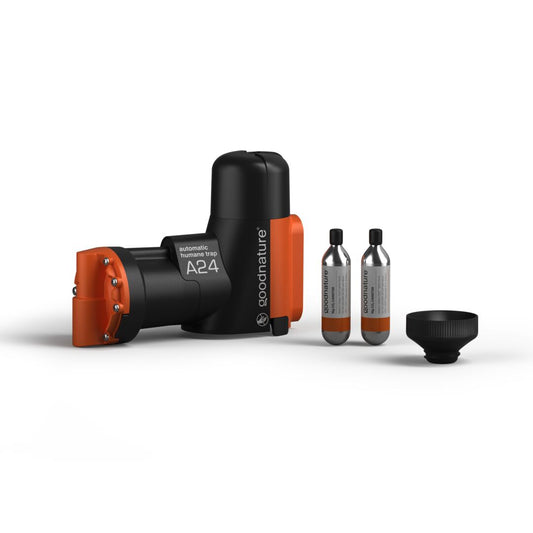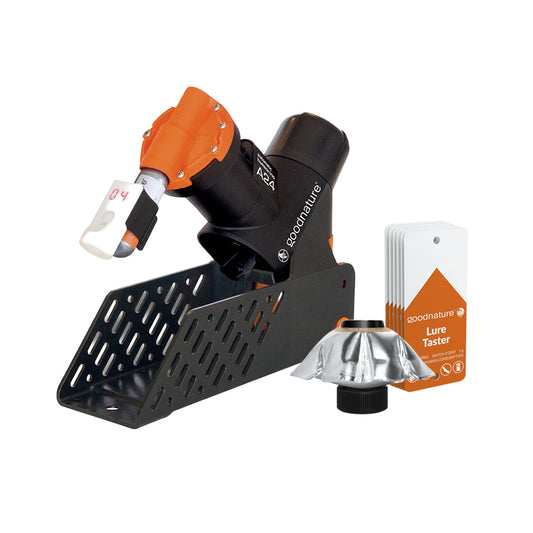The Short Answer: Most Likely Not The Novel Coronavirus (COVID-19)
UPDATE 12/3/20: SARS-CoV-2 is what experts call a promiscuous virus, able to infect a number of species. Most experts are cautious when it comes to trying track the evolution of Omicron, and many believe that that evolution took place in an immunocompromised person. But more experts are looking into the possibility that Omicron had been hatched in a rodent.
UPDATE 4/10/20: A deceased rat found in Kerala, India is being tested for the presence of novel Coronavirus, The rat tested for COVID-19 was found dead near the Kasaragod General Hospital. The hospital is an isolation ward for COVID-19 patients.
UPDATE 4/6/2020: A tiger at the Bronx Zoo has tested positive for coronavirus leaving many to speculate if the disease could be transmitted to other animals such as pets, rodents, livestock etc...
UPDATE 4/3/20: National Geographic reports that scientists are examining the possibility of the COVID-19 taking refuge in new animal carriers that could potentially spread the virus to humans in the future.

*Illustration of the Bamboo Rat
The Long Answer: Rats Can Carry Other Coronaviruses

Regardless of the origin point, rat species ability to carry disease is alarming among this new pandemic. Making sure that your home and business are rodent-free is paramount to protecting your health and safety. While the research is still being conducted on COVID-19, there are a variety of additional pathogens that we know for certain that rats can carry into your home. Here is a list of diseases that can be transmitted by commensal rodents.
Other Diseases Carried By Mice & Rats
The Centers for Disease Control and Prevention (CDC) confirms the presence of diseases rats carry in the United States and Canada, but many more exist around the world. You may wonder can rats carry coronavirus, and science proves that they do.1. Plague
Your high school history class probably taught you that fleas from infected rats caused the Black Death that swept Europe in the 1300s. The bacteria that existed then serves as an ancient ancestor of the plague that American rodents can currently transmit in the western states. A flea bite or direct contact with a diseased animal can infect you, but modern antibiotics can prevent it.
2. Hantavirus Pulmonary Syndrome
A virus carried by the deer mouse, cotton rat and white-footed mouse occurs in most areas of North and South America. Contact with rodents in infestations around your house or breathing the contaminated dust that contains their urine or droppings can infect you. The CDC has no reports that the disease transmits from one person to another.
3. Leptospirosis
Some rodents carry the bacteria for leptospirosis, a disease that can lead to meningitis. You can acquire it by eating urine-contaminated food or by touching water or dirt that contains rodent urine. Received in the same way, the virus for lymphocytic choriomeningitis occurs in about 5 percent of house mice in the United States.
4. Salmonellosis
Rats and mice in the United States and around the world can carry the bacteria that cause salmonellosis. They can spread it to humans, and you can get a diarrheal illness from food or water that contains their feces.
5. Tularemia
The wild rodents that you may encounter in the United States can carry the bacteria for tularemia that has life-threatening potential unless treated with antibiotics. A bite from a tick or deerfly or direct contact with a diseased animal can expose you to the disease.
Pinpointing Indirectly Transmitted Rat-carried Diseases
The vectors for diseases rats carry include ticks, mosquitoes, lice and fleas. While you may not ever see a rat, you attract the carriers that can deliver a disease to you with a single bite. When you think about the risks from exposure to infection, it may encourage you to eradicate the source with our Goodnature® A24 Automatic Rat & Mouse Trap that lets you set it and forget it.
1. Anaplasmosis
Bacteria carried by an infected black-legged tick can cause anaplasmosis, a disease that produces chills, fever, headaches and muscle aches but no lasting effects. It usually involves the deer mouse, white-footed mouse, dusky-footed woodrat and the Mexican woodrat. Typically affecting people who live in the Northeast and the Midwest, anaplasmosis can make you sick from a tick bite. Also, the bite of an infected western black-legged tick can affect residents of the West Coast.
2. Babesiosis
Parasites can infect residents of the upper Midwest and some areas of the Northeast with babesiosis, a disease that attacks red blood cells. Infected ticks can pick it up from deer mice and voles, and they can deliver it to you when they attach to your skin. Look for them during the summer months.
3. Colorado Tick Fever
Rodents that can transmit the disease include the deer mouse, the bushy-tailed woodrat and other small rodents. A virus that can infect residents of the western areas of the United States and Canada, the Colorado tick fever can make you have chills and fever. It goes away when the symptoms subside.
4. La Crosse Encephalitis (LAC)
Named for a town in Wisconsin, this form of encephalitic disease poses a heightened danger for anyone under the age of 16. As a virus that rodents may carry and infected mosquitoes can deliver, LAC occurs throughout the Midwest, the mid-Atlantic and the southeastern states. When it involves encephalitis, the consequences include inflammation of the brain, seizures, paralysis and coma.
5. Lyme Disease
Residents of the Northeast and the Midwest face the danger of getting the bacteria from an infected black-legged tick. As the most common disease carried by vectors in the United States, it can cause headaches, fever and fatigue. Without antibiotic treatment, Lyme disease can affect your heart, joints and nervous system. However, the medicine can make symptoms disappear within a few weeks.
6. Murine Typhus
An infected flea can transmit bacteria from rats that carry typhus in the tropical and sub-tropical areas of the world. In the United States, residents of Texas, southern California and Hawaii risk getting the disease. A bite opens the skin and allows access to the human bloodstream where flea dirt can enter and cause infection. Murine typhus does not spread from one person to another.
7. Powassan Virus
A bite from an infected tick can spread the virus to residents of the Northeast and the Great Lakes region from late spring through the middle of fall. While rare, the disease has no vaccines that prevent it and no medicines that treat it.
8. Relapsing Fever
Black-legged ticks that bite infected wild rodents in the western United States can spread bacteria that causes the disease. Usually affecting campers who sleep in rustic cabins or adventurers who explore caves, the condition creates a cycle of three days with fever and seven without it.
9. Rocky Mountain Spotted Fever
Wild rodents can carry the bacteria that ticks can transmit and create a deadly vector-borne illness. Contrary to its name, the fever occurs primarily in the southeastern states. The bacterial disease requires early treatment with a specific antibiotic to prevent extremely dire outcomes that may include death.
Preventing Disease
You can rid your property of rats and prevent risk to health and safety with an innovative device unlike any kind of traditional trap, and it kills them quickly and immediately. When you install the Goodnature® A24 Automatic Rat & Mouse Trap, you help reduce the rodent population that provides the bacteria and viruses that can infect your friends and family.






